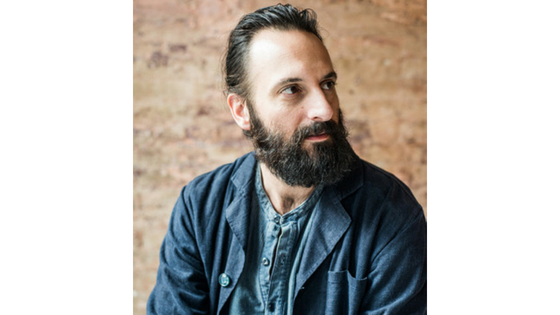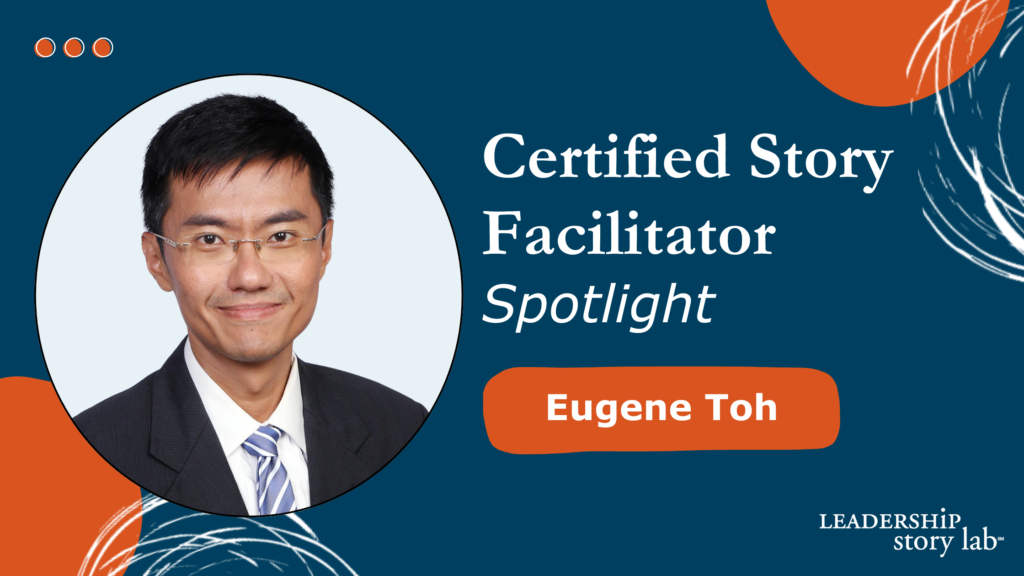July 31, 2018 / Esther Choy

An interview with Michael Ventura, author of Applied Empathy.
After enduring an unpleasant experience, figuring out how to improve upon it comes naturally. However, improving upon something you’ve never actually experienced is much harder, as Michael Ventura of the strategy and design practice Sub Rosa learned.
Several years ago, General Electric asked Ventura and his small team to entirely transform the way patients experienced mammography– in only five months. The project not only succeeded but also gave Sub Rosa a new method of working. By trying to improve upon something he and the members of his studio had never personally undergone, Ventura learned that empathy is a skill– something that can be methodically applied and built into a company’s way of working. (Read about the completed project here.)
We often think of empathy as only impacting our interpersonal interactions, but the mammography project inspired Ventura to see that empathy should impact the way products are created and services are offered.
His new book, Applied Empathy: The New Language of Leadership (Touchstone, 2018), illuminates the principles he has discovered, which draw on the techniques of storytelling as they enable leaders to shift into another person’s perspective.
1. How do you define “applied empathy” when you’re introducing people to the concept?
Interestingly, I often start by saying what empathy isn’t. So often, the term is stretched to include things like “being nice” or compassionate. In truth, empathy is the practice of stepping outside of your own biases in order to gain a deeper understanding of someone else. This is important to say again – it’s a practice. What that means is it takes dedication and repetition to build it into a useful and recurring skill. While some are naturally born with a greater aptitude for it, all of us have the capacity to work on it and to make it a part of us.
2. What is the need that applied empathy fills?
We live in a massively complex world. The interdependencies that abound are countless. As such, we need to be able to take the perspective of others on a nearly moment-to-moment basis in order to be effective leaders, problem solvers, and creators. When we have the ability to apply empathy, we have the ability to bring a deeper sense of understanding into our work and lives in a way that makes them more thoughtful and considerate.
3. When you worked with GE on mammography, you started by mapping out the entire process GE had been using. Is this an important part of applied empathy?
Absolutely! If we hadn’t mapped out the entire experience, we’d have had no hope in creating a solution for it. The mapping was effectively a form of cultivating empathy. Empathy for the patient begins by understanding the patient’s journey. We needed to understand what they went through at every stage – from making an appointment with their doctor, to the test, to waiting for the results. Developing this specific perspective helped us to unearth the pain points in the experience and subsequently present new solutions.
4. In your work for GE, setting was an important part of empathy. Do you think today’s leaders understand this? How can they capitalize on this more?
Setting was crucial because the space became the container for the experience. We were thoughtful about the sort of emotions we wanted to elicit from our participants and designed the space accordingly. For GE, it was all about feeling safe and comfortable in order to promote a more open and honest conversation. By understanding the sort of setting that is most beneficial for the task at hand, leaders can create environments that most naturally allow empathy to occur.
5. When you reimagined the process of getting a mammogram for GE, it required collaboration. Is collaboration an essential part of empathy?
Collaboration is essential, period. Empathy is obviously important as well, but the two aren’t essential to each other’s existences. Yes, collaborative people are likely to share more about themselves, which makes it easier to empathize with them. That said, in some of our research we have worked with groups who were decidedly uncooperative. In fact, that’s often why we are brought in; to help with organizational issues. If teams aren’t effectively communicating or have become adversarial, empathy is often the key to expanding the conversation. Deeper understanding begets more meaningful collaboration every time.
6. How do you decide on the right team?
Teams ideally should be comprised of diverse perspectives. If they aren’t, you can access them by leveraging various archetypes or parallel thinking approaches. These help participants “try on” or act in the role of a particular persona, even if it isn’t their own. For instance, we created a series of archetypes that we use to help teams break out of their biases. One example is that of the “alchemist” – an archetype that is focused on experimentation. Perhaps your team is acting too guarded and safe. Appoint one of them to play the role of the alchemist and see how they would tackle a problem via the spirit of experimentation. The ability to flip into new points of view through archetypes is a helpful way to ensure diversity of thought even when teams are more alike than dissimilar.
7. Can collaboration ever hinder empathy instead of furthering it?
Only unproductive collaboration. This occurs when teams are collaborating purely for the sake of collaboration, which can lead to groupthink mentality. If people are only going through the motions it hinders deep, meaningful collaboration.
8. For the mammography project with GE, you sought documentarians who could gather people’s stories. Why was this important to you?
What’s the lesson here for other business leaders? We sometimes ask participants to share their stories, privately, through documentary content. This allows people to say what they wouldn’t otherwise say in a room full of people. Some of us need the complete safety of a private moment, created by speaking to a camera or voice recorder that only the researcher will listen to, in order to truly open up. These techniques are helpful when dealing with sensitive issues, interpersonal conflicts, and other areas that require deep confidence and trust.
9. What role did empathy play in choosing and shaping the stories you included in this book?
The book was written to provide a path for leaders looking to more fully integrate empathy into their lives. The first few chapters are foundational. They share the story of how we discovered empathy to be a powerful tool for our business. As the book goes on it delves more deeply into the “applied” aspect, which focuses on how we can use empathy to better work together and to build more successful teams and businesses. Each story in the book was selected to help concretize various aspects of this empathic approach, which can initially feel a bit more ephemeral, but ultimately make sense when seen in action.
10. At a recent book event at the Chicago Soho House, you gave a tip on building up our empathy muscle, which was increased self awareness. Could you share a few more tips on how we can continue to build our empathy muscles?
One of the most accessible ways is to work with the archetypes in the book. Each archetype gives you a host of different ways to think about empathy. By working with them regularly you’ll begin to build up a more flexible, dynamic, and overall empathic capability.
11. Anything else you’d like to point out about applied empathy?
Sometimes empathy makes things harder before they get easier. This simply means that empathy requires time, commitment and a willingness to modify preexisting behaviors. If you spend the time working to understand someone more deeply, you can’t then continue on as you originally did. Similarly if you learn something meaningful, you must use this new knowledge. This integration aspect is where the whole “applied” element becomes really essential. It’s not enough to simply understand – you must also do something with your newfound understanding.
Michael Ventura is the CEO and founder of Sub Rosa, a strategy and design firm that has worked with some of the world’s largest and most important brands, organizations and start-ups: from Johnson & Johnson, Pantone, and Adobe to the TED Conference, Delta Airlines and The Daily Show. Michael has served as a board member and adviser to a variety of organizations, including Behance, the Burning Man Project, Cooper-Hewitt, and the U.N.’s Tribal Link Foundation. He is also a visiting lecturer at institutions such as Princeton University and the United States Military Academy at West Point. In addition to these pursuits, Michael leads a thriving indigenous medicine practice, where he helps patients address illness and injury of all types on the road to better well-being. A passionate entrepreneur, he also owns and operates a globally recognized design store in New York’s West Village with his wife, Caroline.
Applied Empathy, his first book, was published by Simon & Schuster this May.
Better Every Story
Leadership Transformation through Storytelling
"This is an amazing and insightful post! I hadn’t thought of that so you broadened my perspective. I always appreciate your insight!" - Dan B.
Get Esther Choy’s insights, best practices and examples of great storytelling to your inbox each month.


